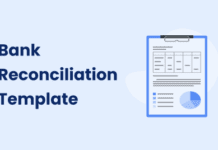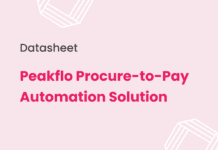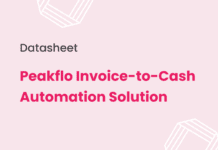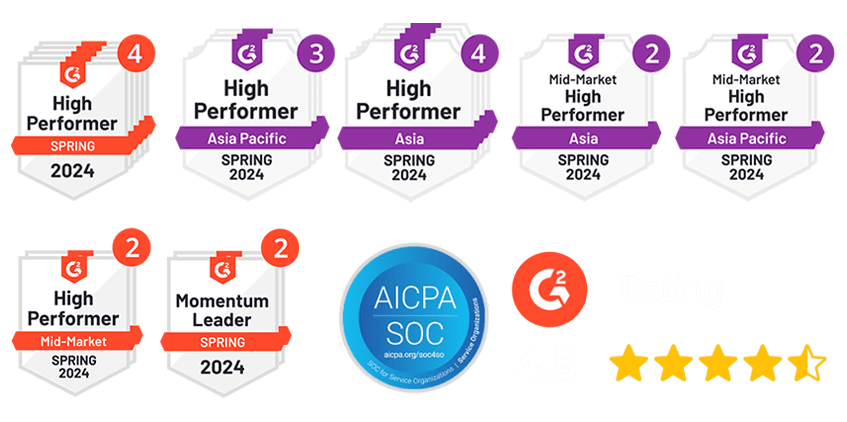Finance and operations teams spend 67% of their daily work on administrative tasks that add no real value. Autonomous AI agents are changing this reality by moving beyond the limitations of traditional AI systems.
Most AI tools today work like sophisticated question-and-answer machines. You ask, they respond. But autonomous agents operate differently. They can handle tasks independently, learn from their actions, and work through complex processes that involve multiple decision points. These systems can access your business data directly, providing accurate information to both your team and customers exactly when they need it.
What makes autonomous agents unique is their ability to connect different tasks and work toward specific goals without constant guidance. Rather than just answering questions, they navigate through various decision points and complete workflows that typically require human oversight.
This article will show you how autonomous AI agents actually function, from how they gather information to how they make decisions and take action. You’ll learn about different types of agents, their key capabilities, and real applications across industries that are already changing how businesses operate.
What Is an Autonomous AI Agent?
Autonomous AI agents represent a significant step beyond standard AI systems. These software entities work independently to achieve specific goals with minimal human supervision. They can sense their environment, make decisions, and take actions to complete their designated tasks.
An autonomous AI agent is a software system that operates independently within changing environments to accomplish complex objectives. These agents can understand context and instructions in natural language, set appropriate goals, work through subtasks, and adjust their decisions when conditions change.
Core Characteristics
Autonomous AI agents have several key characteristics that set them apart from other AI technologies. They demonstrate genuine autonomy—working independently and making decisions without constant human oversight. They also show reactivity by responding quickly to environmental changes, along with proactivity in taking initiative toward their goals.
The architecture of autonomous AI agents includes several critical components. They use large language models (LLMs) as their cognitive engine, allowing them to process different types of information, including text, voice, video, and code simultaneously. These agents also maintain memory systems that store past interactions, helping them learn from experience and improve performance over time.
What sets autonomous AI agents apart is their ability to perceive their surroundings, process information, and execute appropriate actions. Through advanced reasoning capabilities, they analyze data, identify patterns, and make informed decisions based on evidence and context. They then implement strategic planning to develop pathways toward achieving their objectives.
Difference Between AI Agents and Autonomous AI Agents
While the terms “AI agent” and “autonomous AI agent” are often used interchangeably, notable differences exist between them. A standard AI agent is any software program designed to understand its environment and take actions to achieve specific goals. Autonomous AI agents possess significantly higher levels of independence and decision-making capability.
The key difference lies in their operational autonomy. Traditional AI agents typically require substantial human guidance and operate within predefined workflows. Autonomous AI agents function with minimal human intervention, independently defining and pursuing goals.
Autonomous AI agents also demonstrate advanced reasoning frameworks that enable them to plan, analyze, and execute workflows independently. They integrate effectively with external tools and APIs to retrieve real-time data and trigger workflows—capabilities that traditional AI systems often lack.
Another fundamental difference involves how these systems handle errors and adapt to new situations. Traditional AI systems process inputs in isolation and generate single-step responses. Autonomous AI agents continuously assess their actions and adjust in real-time. This self-correction capability allows them to handle complex, multi-step tasks without requiring explicit programming for every possible scenario.
Think of traditional AI systems as trains running on predetermined tracks. Autonomous AI agents function more like vehicles that can choose their routes, detour around obstacles, and make decisions about when and where to stop. This flexibility makes autonomous agents particularly valuable for handling unpredictable, open-ended challenges.
How Autonomous AI Agents Work
Image Source: Encord
Autonomous AI agents operate through a continuous cycle that combines perception, decision-making, action, and learning. Unlike traditional programming that follows fixed instructions, these systems adapt and respond to their environment in real-time.
Perception and Input Gathering
The perception phase establishes the foundation for everything an autonomous agent does. These systems collect information from their environment through multiple channels:
- Sensory data collection: Agents gather raw data from cameras for vision, microphones for sound, LiDAR for spatial awareness, and other environmental sensors.
- API connections: They pull information from databases, knowledge graphs, and structured data sources to build contextual understanding.
- User inputs: Natural language requests, text prompts, and specific commands provide direct instructions.
During this phase, agents process the collected information by filtering out noise, extracting relevant features, and converting data into usable formats. This preprocessing step prepares the raw inputs for the decision-making phase that follows.
Decision-Making via LLMs and Rules
Large Language Models serve as the cognitive backbone of autonomous agents’ decision-making capabilities. These models enable contextual understanding, reasoning, and planning functions that drive intelligent responses.
The decision-making process involves several interconnected components:
- Reasoning module: This component analyzes situations, weighs options, and makes decisions based on context and goals. It uses logic frameworks and chain-of-thought prompting to plan tasks.
- Memory systems: Both short-term memory for ongoing conversations and long-term memory for storing relevant data and past interactions support decision consistency.
- Inference engines: These mechanisms are decision-based systems or neural networks to select optimal actions.
Advanced autonomous agents employ multiple reasoning types—deductive, inductive, causal, and Bayesian reasoning—based on the specific context and requirements rather than relying on a single decision-making approach.
Action Execution and Workflow Triggers
Once decisions are made, autonomous agents execute actions through their interaction with external systems. This execution phase converts digital decisions into tangible outcomes through:
- Tool integration: Agents connect to external systems via APIs, extending their capabilities to perform specific tasks.
- Workflow triggers: Predefined or dynamically generated workflows automate complex processes across multiple systems.
- Autonomy framework: This control layer enables agents to independently manage tasks, monitor progress, and adjust actions based on feedback.
During execution, agents maintain contextual awareness by continuously monitoring the results of their actions. They can adapt their approach when encountering unexpected obstacles or changing conditions without requiring human intervention.
Feedback and Reinforcement Learning
The learning capability of autonomous AI agents comes primarily through reinforcement learning mechanisms. This approach trains agents by having them interact with their environment and learn from successes and failures.
Key aspects of this learning process include:
- Reward mechanisms: Agents receive rewards for successful actions and penalties for mistakes, similar to how humans learn.
- Iterative refinement: Through continuous feedback loops, agents adjust their behaviors to maximize positive outcomes.
- Transfer learning: This allows agents to apply knowledge acquired in one task to other related ones, reducing training time and computational resources.
Deep reinforcement learning combines neural networks with reinforcement learning to handle complex spaces, enabling autonomous agents to master intricate tasks.
Reinforcement learning with human feedback (RLHF) further enhances agent capabilities by incorporating human expertise to guide the learning process, making responses more aligned with human expectations and values.
Different Types of Autonomous AI Agents
Autonomous AI agents aren’t all built the same way. Each type serves different purposes and operates with varying levels of sophistication. Understanding these categories helps you choose the right approach for specific business challenges.
1. Simple Reflex Agents
These agents work on basic “if-then” rules without any memory of past actions. When they detect a specific condition, they respond with a predetermined action. Think of a vacuum cleaner robot that starts cleaning when it senses dirt—it doesn’t remember where it cleaned yesterday or plan for tomorrow.
Simple reflex agents excel in predictable environments where immediate responses are sufficient. They’re reliable for straightforward tasks but can’t handle complex scenarios that require context or planning.
2. Model-Based Agents
Model-based agents maintain an internal picture of their environment. This memory system allows them to track what happened before and predict what might happen next. Self-driving cars use this approach—they build mental maps of their surroundings, remember where obstacles were located, and anticipate traffic patterns.
These agents make better decisions because they consider both current conditions and historical context. They can function effectively even when they can’t see everything happening around them.
3. Goal-Based Agents
Goal-based agents focus on achieving specific objectives rather than just reacting to immediate situations. They evaluate different possible actions based on how well each option moves them toward their target.
Navigation systems demonstrate this approach perfectly. They don’t just respond to traffic—they continuously evaluate route options to find the best path to your destination. These agents can plan ahead and choose strategies that serve long-term goals.
4. Utility-Based Agents
These agents take decision-making a step further by weighing multiple competing factors. Instead of pursuing simple yes-or-no goals, they assign values to different outcomes and choose actions that maximize overall benefit.
Smart home energy systems exemplify utility-based agents. They balance comfort, cost, and environmental impact simultaneously. Rather than just keeping your house at a set temperature, they optimize settings to deliver the best overall result across all your priorities.
5. Learning Agents
Learning agents improve their performance over time through experience and feedback. They operate with four key components: a performance system that makes decisions, a learning system that adapts knowledge, a critic that evaluates results, and an exploration system that tests new approaches.
These agents become more effective as they gain experience, making them valuable for dynamic environments where conditions change frequently. They can adapt to new situations without requiring manual reprogramming.
6. Hierarchical and Multi-Agent Systems
The most sophisticated systems organize multiple agents into coordinated teams. Higher-level agents handle broad strategic decisions while specialized lower-level agents focus on specific tasks.
Disaster response operations showcase this structure effectively. Different agents might analyze weather patterns, coordinate rescue teams, and monitor supply levels—all working together toward the shared goal of effective emergency response. This division of labor allows the system to handle complex, multi-faceted challenges that would overwhelm a single agent.
Capabilities of Autonomous AI Agents
Autonomous AI agents stand apart from basic AI models through their advanced capabilities. These systems can handle complex business processes across different environments and changing conditions.
1. Independent Decision-Making
Autonomous AI agents make decisions without constant human oversight. They use advanced reasoning frameworks like ReAct (Reasoning + Acting) that combine analysis with action. Unlike traditional systems that follow fixed paths, these agents employ different reasoning approaches based on specific situations. This capability allows them to create plans, evaluate options, and choose optimal actions independently.
2. Handling Unpredictable Environments
These agents can adapt to changing conditions in real-time. They monitor their surroundings constantly, detecting changes and adjusting their strategies accordingly. This adaptability comes from their ability to learn from experience and apply that knowledge to new situations. Through simulation environments, agents can test thousands of scenarios, identifying potential problems before real-world deployment.
3. Understanding Natural Language
Autonomous agents can understand and generate human language naturally. This goes beyond basic comprehension to interpreting user intent, emotional tone, and contextual nuances. Advanced agents can analyze sentiment, recognize speech patterns, and support multiple languages, making interactions more intuitive.
4. Executing Complex Workflows
These agents excel at breaking down complex objectives into manageable tasks. Using multi-hop orchestration, they can execute detailed workflows by planning action sequences, monitoring progress, and adjusting as needed. This allows them to handle sophisticated processes that require multiple interdependent steps.
5. Connecting with External Tools
A key strength of autonomous agents is their ability to extend functionality through tool integration. By connecting with external APIs, databases, and specialized services, these agents can access real-time data and trigger specific actions. The MCP (Model Context Protocol) provides a standardized way for AI models to interact with external tools, enabling seamless integration across platforms.
6. Processing Information in Real-Time
Autonomous agents work with fresh, real-time data streams. Event-driven architecture enables continuous processing of incoming information, allowing agents to make decisions based on current conditions rather than outdated information. This capability is particularly important in dynamic environments where conditions change rapidly.
Modern autonomous agents can independently navigate websites, understand web interfaces, and interact with online services. This browsing capability enables them to search for information, complete forms, click buttons, and extract relevant data—essentially functioning as digital users capable of accomplishing complex web-based tasks.
8. Maintaining Context Through Memory
Advanced memory systems give autonomous agents contextual awareness. They employ short-term memory for immediate context, long-term memory for persistent knowledge, and episodic memory for specific experiences. These memory types enable agents to recall past interactions, apply learned patterns, and maintain consistency across conversations.
Real-World Applications Across Industries
Autonomous AI agents are already solving specific business problems across multiple sectors. These systems address real challenges that finance and operations teams face daily, delivering measurable results.
Customer Support Operations
Customer service teams have seen dramatic improvements with autonomous agents handling complex support workflows. Organizations report resolution times dropping by nearly 90% when these systems manage routine inquiries.
These agents don’t just answer questions. They handle documentation, track ongoing cases, and escalate complex issues to human representatives when needed. With 88% of customers saying good service makes them more likely to purchase again, autonomous agents help businesses meet rising expectations for personalized support.
Finance Process Automation
Finance teams use AI agents to automate processes from invoice processing to fraud detection. PwC reports that AI agents in finance are reshaping how CFOs gather and analyze data, putting them in more strategic positions. These systems monitor transactions continuously, spotting anomalies and ensuring compliance with regulations like SOX and GDPR.
The financial services industry expects to account for 20% of worldwide AI spending, reaching $632 billion between 2024-2028. This investment reflects the tangible value these systems provide in reducing manual work and improving decision-making accuracy.
Healthcare Process Optimization
Healthcare organizations deploy AI agents to improve patient outcomes while reducing administrative burden. These systems optimize hospital operations, provide evidence-based treatment recommendations, and enhance medical imaging accuracy. They manage continuous health monitoring for remote patients, enabling effective care without frequent hospital visits.
AI agents also accelerate drug discovery by analyzing large datasets to identify promising candidates. For daily operations, these systems automate appointment scheduling, insurance verification, and patient follow-ups.
Retail and E-commerce
Retail businesses are adopting autonomous agents rapidly, with 93% of e-commerce companies viewing them as a competitive advantage. Companies using AI across sales and marketing functions report 10-20% increases in customer acquisition and retention. These systems analyze customer behavior to deliver personalized recommendations and optimize pricing strategies based on real-time data.
Currently, 84% of e-commerce companies prioritize AI adoption to enhance efficiency and customer satisfaction. The focus reflects how these agents directly impact revenue through better customer experiences and operational efficiency.
Supply Chain Management
Supply chain operations benefit significantly from autonomous AI agents that streamline complex processes while reducing risks. These systems analyze supply chain data to make informed decisions about inventory management, transportation routing, and supplier performance.
Autonomous agents excel at predicting potential disruptions—from weather events to geopolitical tensions—and can reroute shipments or suggest alternative suppliers before problems occur.
Want to see how autonomous AI agents can work in your industry? Take a demo for Peakflo Agentic Workflow to explore real applications for your business.
Why Businesses Choose Autonomous AI Agents
Organizations using autonomous AI agents report measurable improvements across key business areas. The benefits extend beyond simple task automation to meaningful operational advantages that impact your bottom line.
1. Boosting Team Efficiency and Output
Autonomous AI agents can significantly increase what your team accomplishes each day. When employees have AI support, they’re 72% more likely to report feeling “very productive” at work.
Rather than replacing your team, autonomous agents handle routine tasks so your staff can focus on strategic work that requires human insight and creativity.
2. Growing Without Adding Costs
The economic advantage of autonomous agents becomes clear when you need to scale operations. These systems handle increased workloads without requiring additional infrastructure investments. Your business can expand rapidly without proportionally increasing headcount or overhead costs.
This capability allows companies to pursue growth opportunities while maintaining efficient operations.
3. Operating Around the Clock
Autonomous agents work continuously without breaks, fatigue, or downtime. This proves especially valuable for customer support, where AI systems handle inquiries 24/7 without any drop in service quality.
Real-world applications show impressive results—these agents reduce process times by up to 90% while maintaining consistent performance regardless of request volume or timing. Your business processes continue running smoothly during evenings, weekends, and holidays when human staff aren’t available.
4. Making Better Decisions with Data
Autonomous agents improve decision quality through superior data processing capabilities. They analyze large amounts of information faster and more accurately than humans, spotting patterns that might otherwise go unnoticed. Instead of reacting to issues, you can take proactive steps based on what the data reveals about your business patterns and customer behavior.
How Autonomous Agents Differ from ChatGPT and Traditional AI
Understanding the differences between autonomous AI systems and other technologies helps clarify why they represent such a significant step forward in artificial intelligence capabilities.
ChatGPT and similar large language models work like sophisticated conversation partners. They respond to your prompts with text, but they don’t remember what happened yesterday or take actions beyond generating responses. Each conversation starts fresh, without memory of previous interactions. Autonomous agents work differently—they remember past actions, learn from experiences, and can take concrete steps to complete tasks.
Traditional AI models need human prompts for every action. They can’t operate beyond their pre-programmed boundaries. Think of traditional automation like trains running on fixed tracks—efficient for their designated routes but unable to choose alternative paths. Autonomous agents function more like vehicles that can navigate independently, choose optimal routes, and adapt when they encounter obstacles.
The architecture behind these systems reveals key differences. Traditional AI models handle single interactions without maintaining state between sessions. They work with pre-trained data and can’t connect dynamically with external tools or databases. Autonomous agents use complex decision-making algorithms that enable them to analyze situations, set appropriate goals, and execute multi-step processes without constant supervision.
Memory capabilities create another important distinction. Traditional AI systems typically have little to no memory of past interactions. Autonomous agents utilize sophisticated memory systems that help them improve performance over time. This learning ability allows them to get better through experience, something standard AI systems can only achieve through manual retraining by developers.
Most importantly, autonomous agents demonstrate genuine adaptability to changing environments. Traditional automation works well in structured, predictable scenarios. Autonomous systems excel when conditions are uncertain—they analyze new data, adjust strategies, and develop solutions to challenges that weren’t explicitly programmed.
This flexibility makes autonomous agents particularly valuable for handling unpredictable business challenges where traditional automation would require extensive reprogramming for each new scenario.
Challenges and Considerations for Autonomous AI Agents
Autonomous AI agents offer significant capabilities, but they also come with important limitations that businesses need to understand. These challenges don’t make the technology unusable, but they do require careful planning when implementing these systems in critical business processes.
- Data Dependency and Bias Risks: Autonomous AI agents learn from the data they’re trained on, which means they can inherit biases present in that data. If the training data contains historical prejudices or systemic inequalities, agents may make decisions that reflect these biases. These systems also struggle when they encounter data gaps—incomplete datasets can limit how well they work across different scenarios.
- Lack of Emotional Intelligence: Autonomous agents can process information efficiently, but they don’t have genuine empathy or emotional understanding. This limitation becomes particularly important in situations that require human connection and understanding.
- Resource Consumption and Cost: Building and running advanced autonomous agents requires significant computational resources. The costs can be substantial—training high-performance agents is expensive, and operational costs can scale quickly as usage increases.
- Security and Ethical Concerns: Autonomous agents create new security challenges that businesses need to address. These systems can be vulnerable to prompt injection attacks, where malicious instructions can manipulate agent behavior.
A Way Forward
Autonomous AI agents represent a significant step forward from traditional AI systems. These agents can perceive their environment, make complex decisions, execute actions independently, and improve through experience. The practical applications span multiple industries, from customer support to supply chain management.
Autonomous AI agents will likely become essential business tools as their capabilities continue advancing. Their ability to handle complex, multi-step processes without constant supervision marks a fundamental shift in how organizations approach automation. Rather than replacing human workers, these agents serve as intelligent assistants, handling repetitive tasks while allowing people to focus on strategic initiatives.
Peakflo’s Agentic workflow represents the cutting edge of finance operations automation, transforming how businesses handle critical financial processes. Unlike traditional rule-based RPA systems, Peakflo’s AI Agents function as intelligent finance teammates that think, speak, and act autonomously.
Finance teams using Peakflo’s Agentic workflows don’t just save time—they reclaim control with traceable, intelligent conversations fully integrated into their systems of record. Experience the future of finance operations with significantly reduced manual effort—schedule your personalized demo today and discover how AI agents can transform your financial workflows.
FAQs
Q1. How do autonomous AI agents differ from traditional AI systems?
Autonomous AI agents can operate independently, make complex decisions, and adapt to changing environments without constant human supervision. Unlike traditional AI that follows fixed instructions, autonomous agents use advanced reasoning frameworks to plan and execute multi-step tasks while continuously learning from their experiences.
Q2. What are the key capabilities of autonomous AI agents?
Autonomous AI agents possess advanced capabilities, including independent decision-making, adaptability to dynamic environments, natural language processing, multi-step task execution, tool integration, real-time data processing, external browsing, and contextual awareness through sophisticated memory systems.
Q3. In which industries are autonomous AI agents being applied?
Autonomous AI agents are being utilized across various sectors, including customer support, finance, healthcare, retail and e-commerce, and logistics and supply chain management. They’re automating processes, enhancing decision-making, and improving operational efficiency in these industries.
Q4. What are the main benefits of using autonomous AI agents?
The key benefits include increased efficiency and productivity, scalability without proportional cost increases, 24/7 availability for task automation, and improved decision-making through advanced data processing capabilities. These advantages allow businesses to optimize operations and focus on strategic initiatives.
Q5. What limitations do autonomous AI agents face?
Despite their capabilities, autonomous AI agents have limitations such as potential data biases, lack of true emotional intelligence, high resource consumption and associated costs, and security and ethical concerns. These challenges need to be carefully considered when implementing autonomous AI systems in critical environments.











































